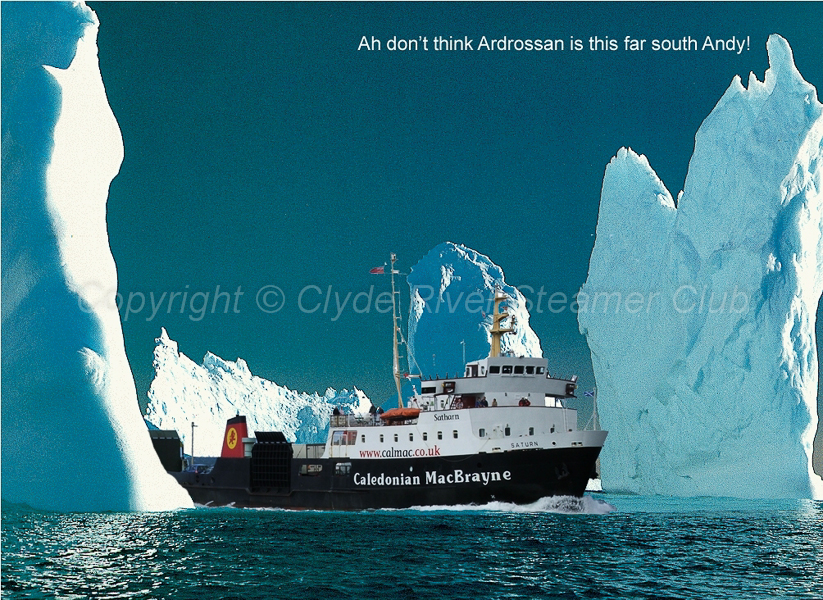Few families have as long, as close or as distinguished an association with west of Scotland shipping as the Sinclairs, so the Club was privileged to have Lawrie Sinclair as speaker for its February 13 meeting at Jurys Inn, Glasgow.

Lawrie began his career as a ship’s draughtsman at the Ailsa Shipbuilding and Engineering Company at Troon, and has held senior managerial roles with James Lamont, Garvel Dry Dock, Ailsa Shipbuilding and Engineering Company, Caledonian MacBrayne Ltd and David MacBrayne Ltd. Now retired, he is a member of the board of Waverley Excursions Ltd.
His father George served as marine superintendent of the Caledonian Steam Packet Company in the 1950s and 1960s, and was later CalMac executive director. Lawrie’s grandfather, William Lawrie Sinclair, began his career on a Clyde-based sailing ship, rounding Cape Horn several times before the First World War. He later became London-based chief marine superintendent of the LMS. So the title of the talk, “The Sinclair Dynasty”, was entirely appropriate.
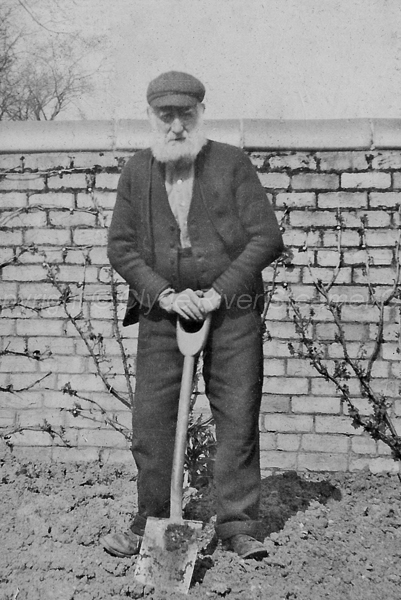 |
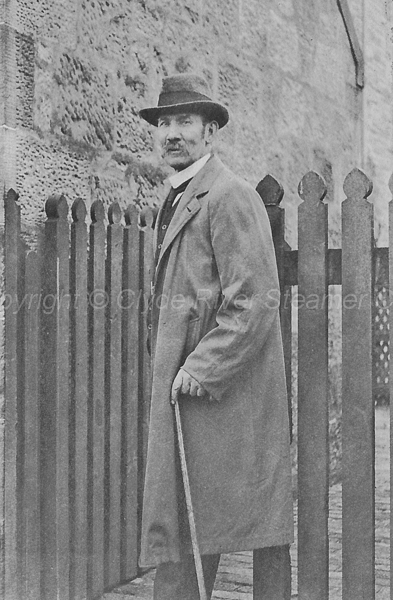 |
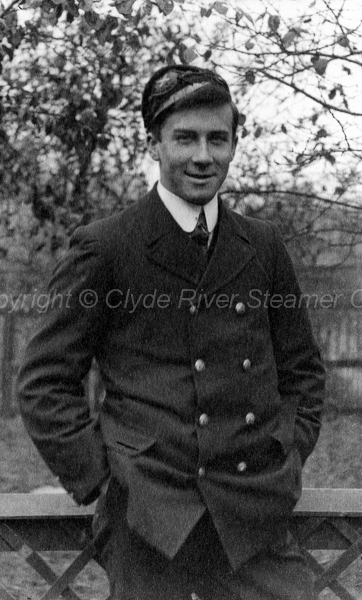 |
||
| Great-great-grandfather William Sinclair |
Great-grandfather George Sinclair |
Grandfather William Lawrie Sinclair |
The story began in Caithness in the 1840s with the birth of William Sinclair, Lawrie’s great great grandfather. A dry stane dyker, he came to Ayrshire to work for the Marquis of Ailsa. His son, George Sinclair (Lawrie’s great grandfather), was a pub owner and local councillor in Stevenson. The shipping connection began with the birth in 1892 of William Lawrie Sinclair. On leaving Irvine Royal Academy in 1909, he joined Thomas Law, a Glasgow shipping company, as an apprentice on the square-rigged sailing ship Clackmannanshire.
Clackmannanshire
Leaving Glasgow on 10 August 1909, he sailed to Antafagasta, Chile, and did not return to the Clyde until October 20 the following year: the trip earned him the princely sum of £5 18s 8d. His second voyage, from the Clyde to Vancouver, took 126 days, three weeks of which were spent rounding the Horn. This time he was away for a total of 707 days, part of which was spent crossing the South Atlantic and rounding the Cape of Good Hope to east Africa.
During the First World War William Lawrie Sinclair served on submarines in the North Sea. After the war he joined the Anchor Line, working his way up from 3rd mate of the Vitellia in 1918 to master of the Italia in 1922.
Italia leaving the Clyde to be broken up
He became the company’s marine superintendent in 1926, based in St Vincent Street, Glasgow, and joined the LMS in 1934 as marine superintendent for vessels sailing from Holyhead, before graduating to London-based chief marine superintendent for all the company’s vessels (1937-52). He retired to Saltcoats, joined the Glasgow Cape Horners (a club for seafarers who had sailed round the Horn in sailing ships) and died in 1958.
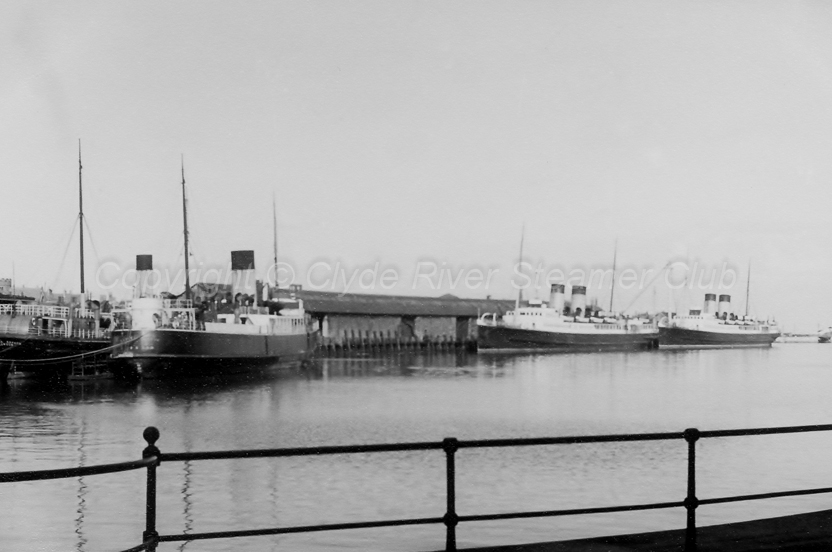 |
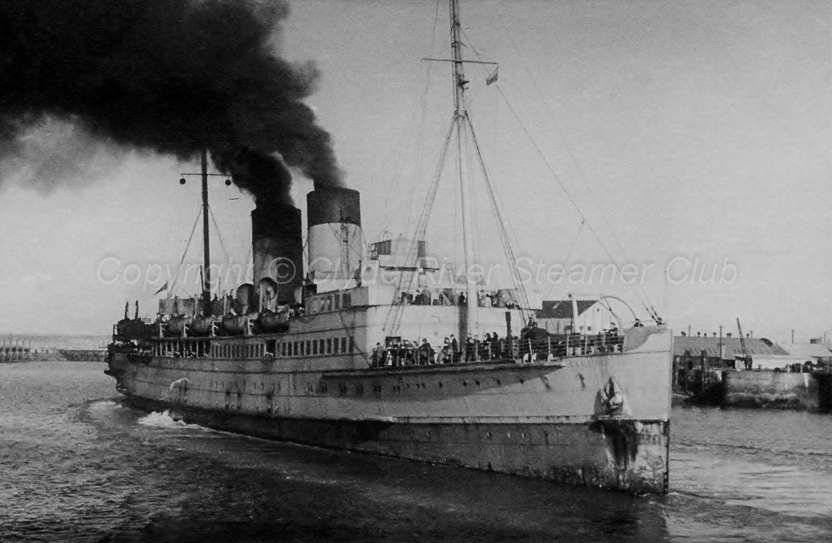 |
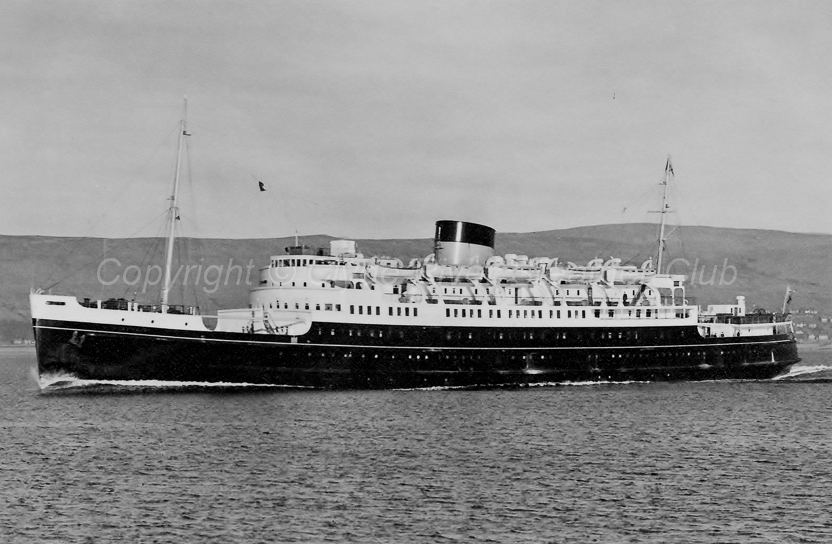 |
||
| Holyhead Mail Berths, 1937 | Cambria leaving Holyhead during WWII | Hibernia on trials in 1949 Harland and Wolff picture |
Lawrie’s father George, born in 1918, was educated at the Glasgow Academy and apprenticed as a cadet in 1933 with the Henderson Line, sailing on the Mandalay and the Burma among others. During the Second World War he was a midshipman on HMS Isis, saw action at Dunkirk and in the Atlantic, and was awarded the Distinguished Service Cross for his part in opening up supplies to Tobruk, scene of one of the biggest North African confrontations between Allied and Axis forces. Lawrie recounted how, while leading three landing craft into the port, his father had found an Italian U-boat in their midst and “although badly wounded by shrapnel in his back and arms – he carried 40 bits for the rest of his life – he turned his craft on the submarine and rammed it.” George Sinclair volunteered for the newly formed Royal Naval Commandos, became a member of the elite Combined Operations Pilotage Parties and served on HMS Maidstone, based in Malta, and on the submarine Unruffled, undertaking reconnaissance of the beaches of Sicily for possible landing sites. He won several decorations for gallantry, including the Distinguished Service Order and a letter of commendation from Lord Mountbatten.
After the war he obtained his master’s certificate with the Henderson Line, serving on the Kanbe, Salween, Prome and Pegu on the Burma trade, with one voyage taking him from Rangoon to Vladivostok.
In 1948 he became British Railways’ assistant marine superintendent for Clyde, Forth, Kyle of Lochalsh and Stranraer operations. In February 1949, when the Marchioness of Lorne grounded off Kilcreggan, George’s actions averted what could have been a total loss of the vessel, as a result of which he received commendations from the Railway Executive in London.
The Marchioness of Lorne aground at Kilcreggan in 1949
Promoted in the early 1950s to marine superintendent, he oversaw the construction of the Maids, the ABC ferries and the Glen Sannox. “As a small boy I was on her maiden voyage,” said Lawrie, “which happened to be Greenock Fair Saturday. She ran late. In later life I would never advocate the introduction of a new vessel on a day such as that.”
Lawrie also remembers visiting Garvel Dry Dock with his father to inspect the Caledonian Princess during her guarantee docking in 1961. “He took me down to the bottom of the dock, and you could see yourself on the ship’s bottom, as the plates had been sand-blasted as a result of travelling up and down the shallow Loch Ryan.” According to Lawrie, “the period after the amalgamation of the CSP and David MacBrayne, and the subsequent formation of CalMac, was a difficult and uncertain time for my father.”
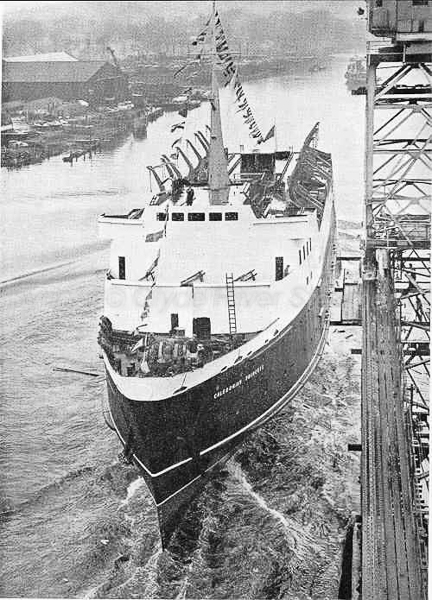 |
%20~.jpg) |
||
| Caledonian Princess being launched at Dennys |
Caledonian Princess passing Cloch Lighthouse after overhaul |
One of the projects CalMac inherited was the rebuilding of the Clansman – a project that involved raising the superstructure. “This was a bigger job than Ailsa thought,” said Lawrie, who was working for the Troon shipyard at the time, “and I remember being on the car deck when the ‘house’ was raised. First of all we had to ensure that the complete superstructure was free, as any one pipe, bulkhead, shell plate or bracket could stop the process. It was carried out using 50-ton jacks on keel blocks throughout the car deck. As the jacks came to their limit, other jacks took their place and so it continued up to the required height. This was coordinated by the foreman shipwright using a whistle, one blast for five pumps of the jacks. The loftsmen and design team were on hand to ensure that the superstructure lifted evenly.”
George Sinclair was also involved in the transfer to the Clyde in 1970 of the Swedish drive-through ferry Stena Baltica (renamed Caledonia). After visiting Sweden to inspect the vessel, he submitted a report warning about her deficiencies and advising against a purchase – but his word was overruled. Later, when the alarm was raised about the rising cost of adapting her to UK standards, he was able to produce his report and remind his superiors of the advice he had given.
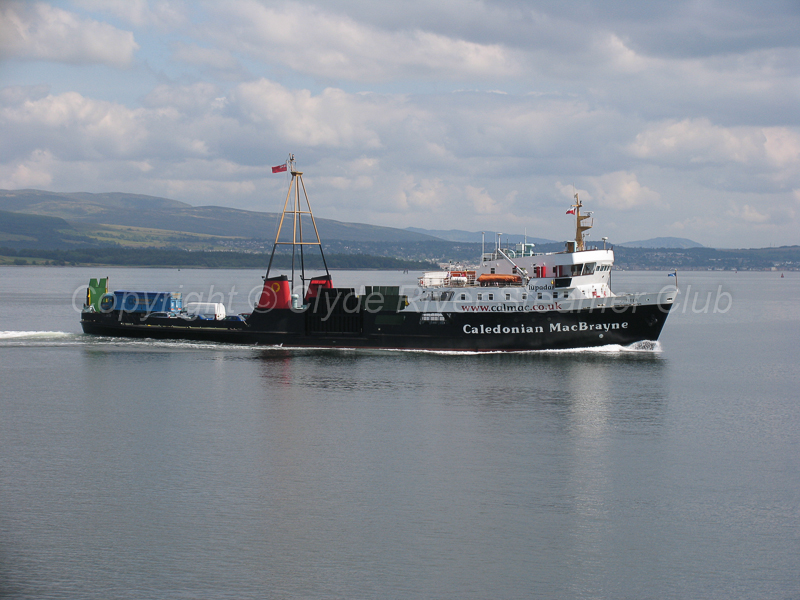 |
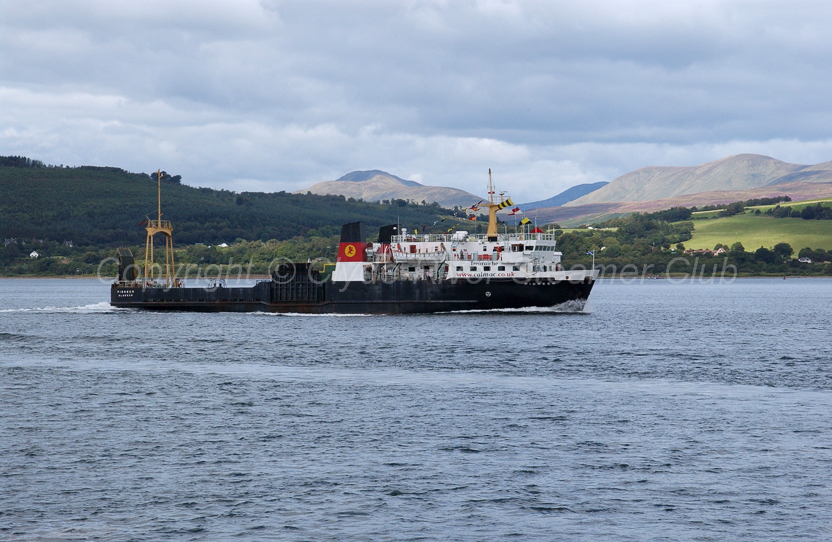 |
 |
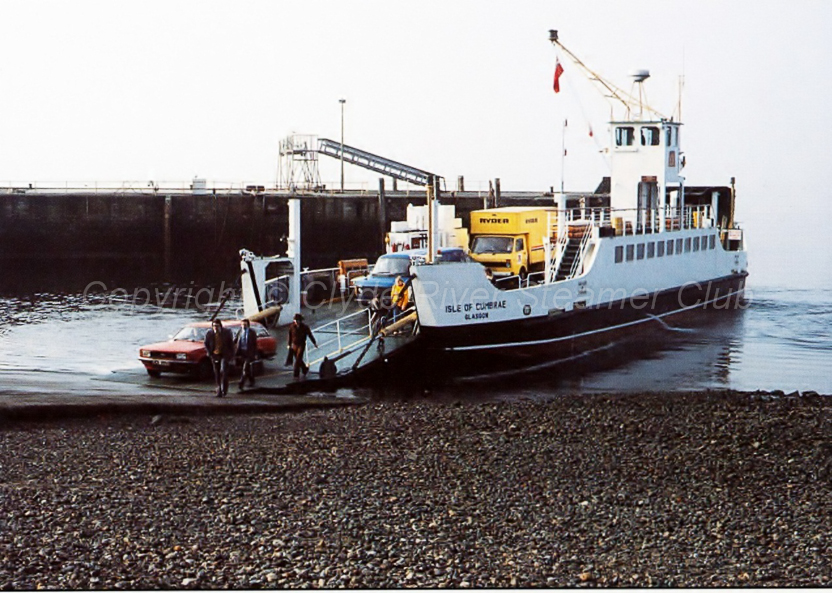 |
|||
| MV Jupiter off Greenock | MV Pioneer | MV Claymore awaiting transfer to Argyll and Antrim SP Ltd | MV Isle of Cumbrae at Largs |
The period from 1970 to 1979 proved to be “a very productive time”. George Sinclair had a major involvement in the planning and implementation of the fleet modernisation programme, embracing the development of roll on/roll off facilities, the advent of the ‘streakers’, the Pioneer, the Claymore and the Isle of Cumbrae, and the conversion/refurbishment of the Maid of Cumbrae and Glen Sannox. “I believe the relationship between John Whittle and my father allowed the progression of service improvements to happen smoothly and effectively,” said Lawrie. Ill health forced George Sinclair to retire in 1981 aged 63. He died in 2000.
Lawrie was born in 1944 and educated at the Glasgow Academy. Starting in 1960, he spent five years with Ailsa as an apprentice draughtsman before joining the Design Office, where he was part of a team of three. “The designs were all done by hand, no computers or calculators, only a barrel slide rule. A General Arrangement, Midship Section, Body Plans and Hydrostatics were produced, all by hand, then a cost submitted to the Owners.”
During Lawrie’s time in the Design Office, Ailsa quoted for three vessels for the Scottish Office, later to be named Hebrides, Clansman and Columba. He and his father had discussions about them, “and he couldn’t understand why they weren’t fitted with twin rudders and had the lift forward of the bridge” – the implication being that if Ailsa had won the order, these design faults could have been rectified. Instead the order for MacBrayne’s first three car ferries went to Hall Russell of Aberdeen.
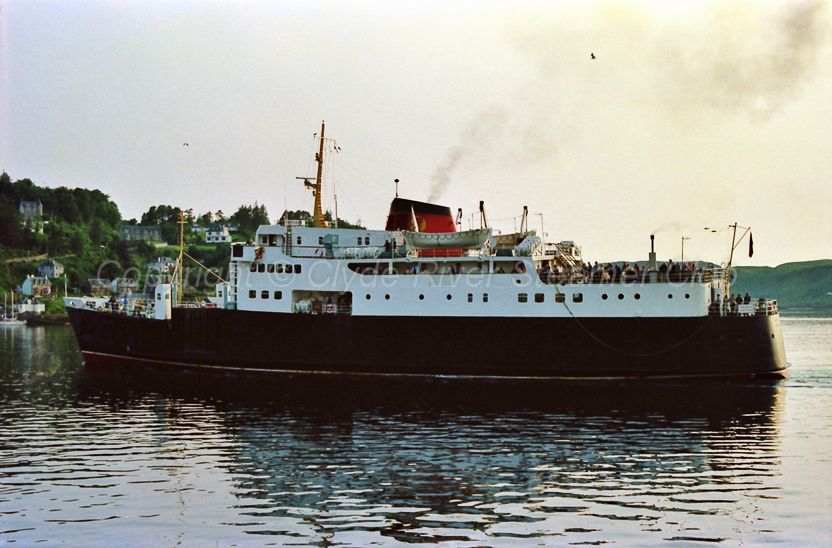 |
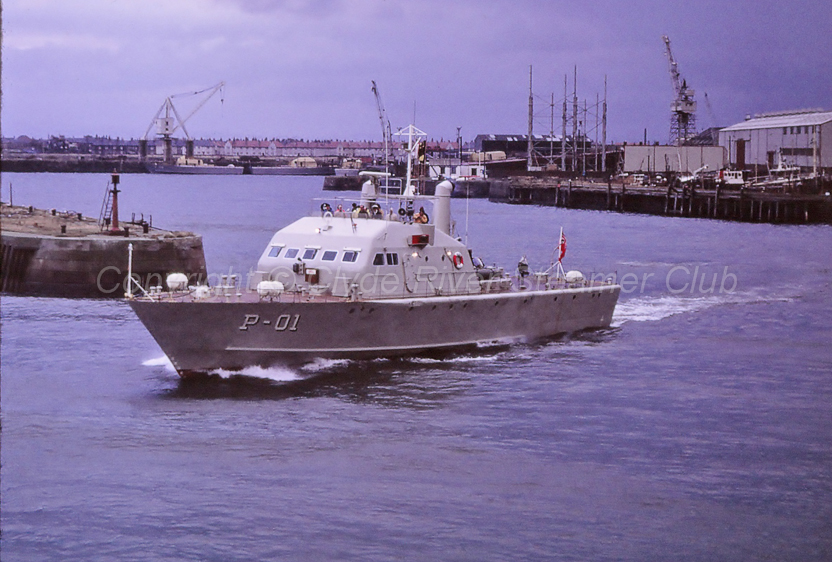 |
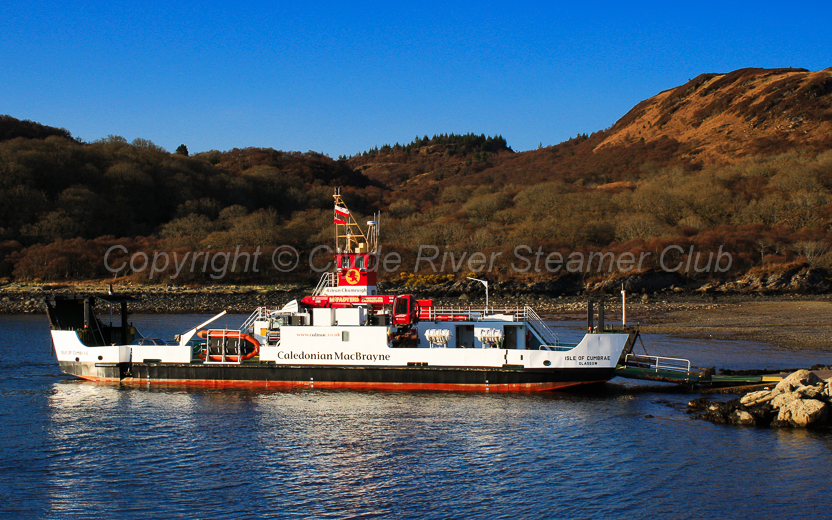 |
 |
|||
| MV Columba in Oban bay | Andras Quintana Roo leaving Troon for trials |
MV Isle of Cumbrae at Portavadie | MV Lochmor on Trials |
After a spell away from Ailsa to study for a degree in naval architecture, Lawrie returned around the time the Troon shipyard landed an order for 21 Mexican gunboats (some of which ended up being built by Scott’s of Bowling and Lamont’s of Port Glasgow). “By the time we had built the third vessel we had halved the man-hours required for construction, but by the 10th we were back at the man-hours for the first and the 11th took 25 per cent more time than the first. The reason? The Mexicans didn’t want to go back to Mexico.”
Lawrie went on to supervise the construction of Ailsa’s Shipbuilding Hall, “in which we could build ships up to 120 metres in two halves and join them together on the Berth. The limiting factor on size was the breakwater opposite the building berth.” The Isle of Cumbrae was built there – and, in 1979, the Lochmor, by which time Lawrie had been promoted first to ship repair manager and then production manager. The Lochmor was built in five hull sections and was on the Berth for only six weeks before her launch (by Lawrie’s mother Grace). Outfitting and trials took another six weeks. The cost of the ship had originally been estimated at £500,000, “but CalMac managed to find another £50,000, which allowed an extra six metres to be added to her length, giving her an additional lounge.”
From 1981 to 1987 Lawrie worked at Lamont’s, first as general manager and then managing director. One of the jobs they undertook was the repair of the Claymore after she struck rocks at Lochboisdale. “Following an external and internal survey it was concluded that approximately 10 tons of bottom plates would have to be renewed. She had been holed in the stabiliser room. Had the ship’s engineers not shut the watertight door, the engine room would also have flooded. As it was, the shell plating in the engine room was indented up to six inches. The contract took six weeks, working 24 hours a day, and included the re-alignment of both engines.”
When Lamont’s closed in 1987, Lawrie was part of a team that took over Garvel. Turnover went from zero to £5m in five years. In March 2000 he returned briefly to Ailsa as managing director – his brief being to complete the five remaining vessels in the order book before the yard closed down.
In November 2000, a month after handing over CalMac’s Small Isles vessel Lochnevis to her owners, Lawrie received a phone call from Harold Mills, chairman of CalMac, inviting him to become managing director on a temporary basis.
When the job was advertised the following March, Lawrie applied. He admits to having been nervous at the formal interview, about which he didn’t remember very much – “except the chairman asking me what was wrong with CalMac. My reply was that it was about 30 years behind the times: no financial information, head office weren’t always acquainted with what was going on in the network, it was too centralised and we needed to look after our staff and customers, which we were not doing.” Far from being put off by such straight talking, the board were impressed and Lawrie was confirmed in the job. “Thus started one of the most rewarding parts of my career.”
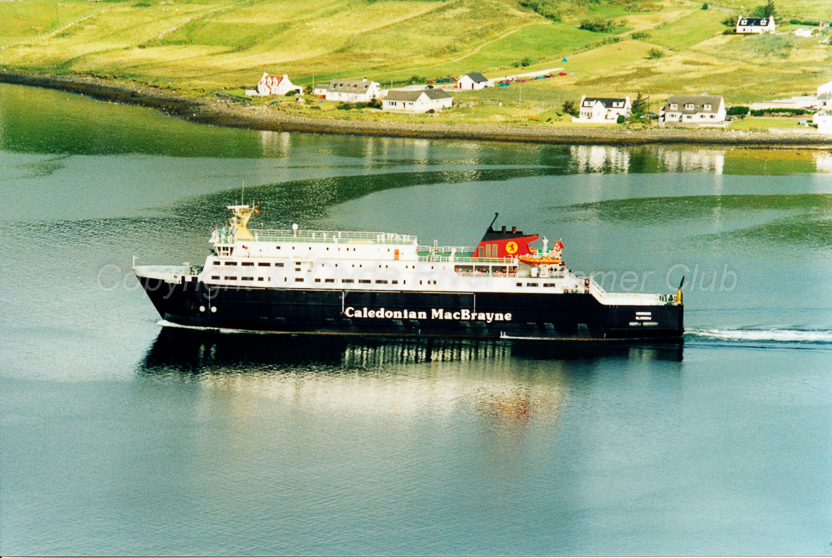 |
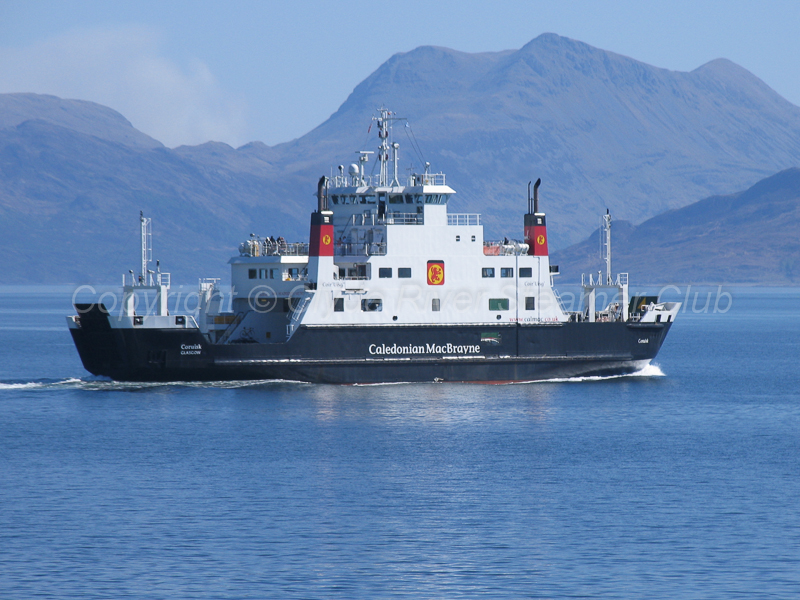 |
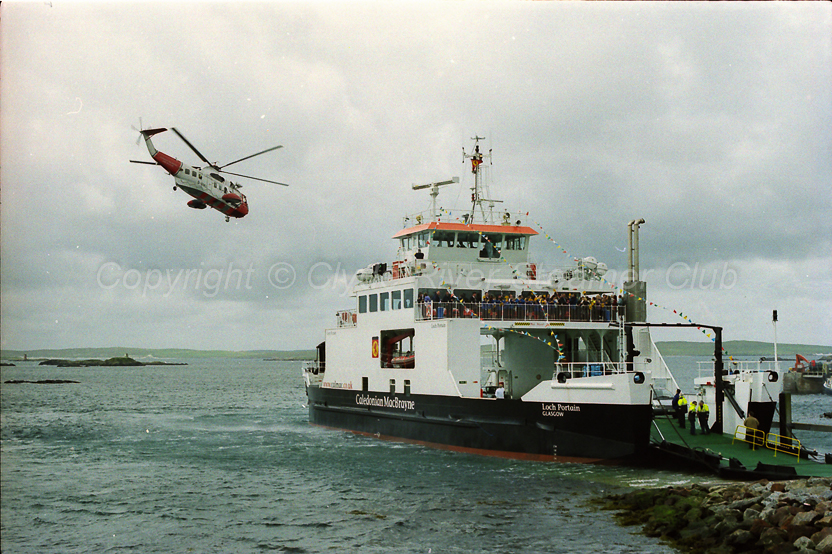 |
.jpg) |
|||
| MV Hebrides leaving Uig | MV Coruisk leaving Armadale | MV Loch Portain at Leverburgh | Loch Shira at Cumbrae slip (Photo H Mills) |
Lawrie’s period with CalMac encompassed a succession of crises on the Stornoway run, as well as the introduction of the Hebrides, the Coruisk, the Loch Portain, the Loch Shira, the Bute and the Argyle. Referring to these last two, he said CalMac was keen to fit Voith Schneider propulsion units. “However, the hull design did not lend itself to the weight of the Voiths or their size forward and aft. Voith did not come up with a suitable hull form. The only alternative was 360-degree Azimuth thrusters.”
These had previously been fitted to the Coruisk with disastrous consequences: soon after entering service she had lost power and run onto the beach at Mallaig, losing a propeller in the process. But by the time the Bute was being planned, the manufacturers had designed a slipping-clutch arrangement which stopped the slowing propellers from stalling the engine, thereby circumventing the problem that had caused the Coruisk’s mishap. Lawrie explained that, due to savings made by fitting Azimuth thrusters, CalMac was able to install stabilisers on the Bute, giving greater comfort to passengers.
As for the Argyle, he revealed that CalMac wanted to increase her classification to Class 3 so that in emergencies she could operate south of the Cumbraes – a move that would have entailed fitting a double bottom, better fire detection and other minor items. “This was turned down,” he said, “as certain members of the government thought we were correcting mistakes made on the Bute – which was far from the truth.”
Lawrie also revealed that since the introduction of Sunday sailings from Stornoway on 19 July 2009, they have become the busiest sailings of the week on the Lewis run.
When the dormant David MacBrayne Ltd was resurrected in 2008 to be the holding company for CalMac Ferries and NorthLink Ferries, Lawrie was appointed chief executive for the start-up period. He rounded off his talk by describing his 10-year association with Caledonian MacBrayne and David MacBrayne as “a privilege”.
In his vote of thanks, Graeme Hogg spoke of a “fascinating career” and a “fascinating family”. Lawrie’s account of the Sinclair dynasty had not only provided insights into the minutiae of shipbuilding and ship operations over the past century, but had included much information that was new to Club members – around 100 of whom were present to accord Lawrie a most enthusiastic round of applause.
Lawrie very kindly provided all the images from his presentation to allow a selection to be used for this report on the website. Images have been incorporated within the text of the report as appropriate but the selection of images below were also of interest. All the images in this report are now the property of the Scottish Maritime Museum.
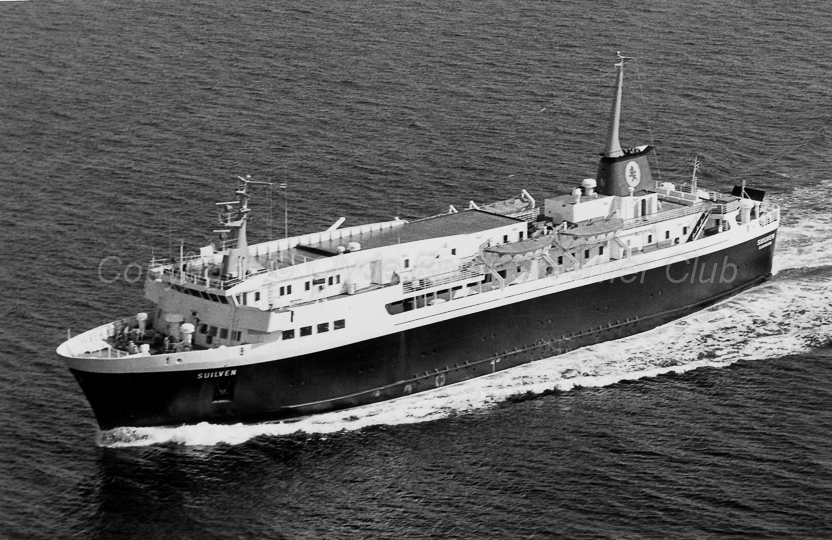 |
 |
 |
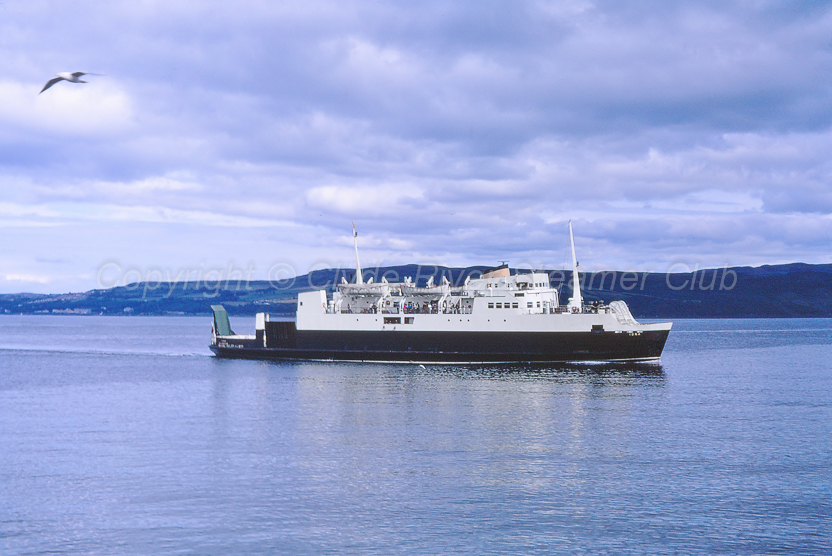 |
|||
| MV Suliven on Builders Trials | Arriving at James Watt Dock for the last time, up for sale |
Sound of Jura | MV Iona arriving at Dunoon in CSP colours |
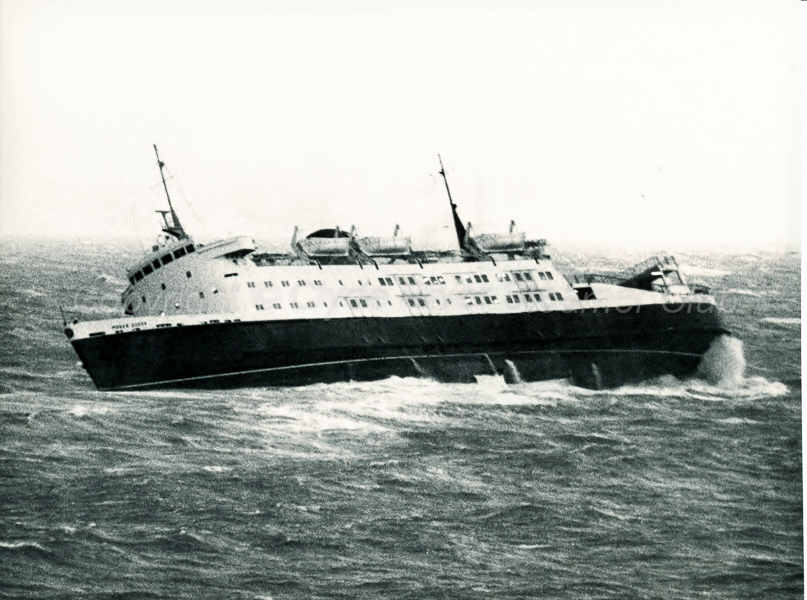 |
 |
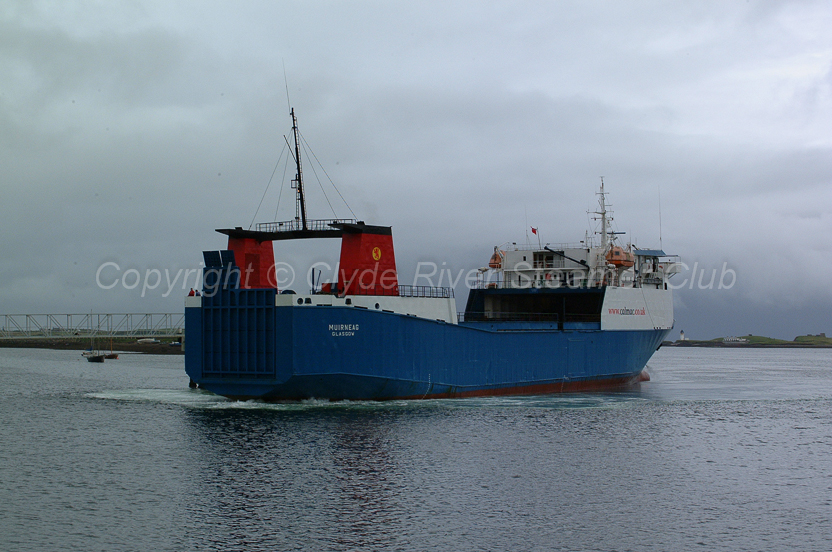 |
 |
|||
| Mona’s Queen leaving Douglas in heavy weather |
MV Isle of Arran | Muirneag arriving at Stornoway | MV Finlaggan at Kennacraig |
A personal favourite of the info was this image of our old friend Saturn in a very unfamiliar setting!












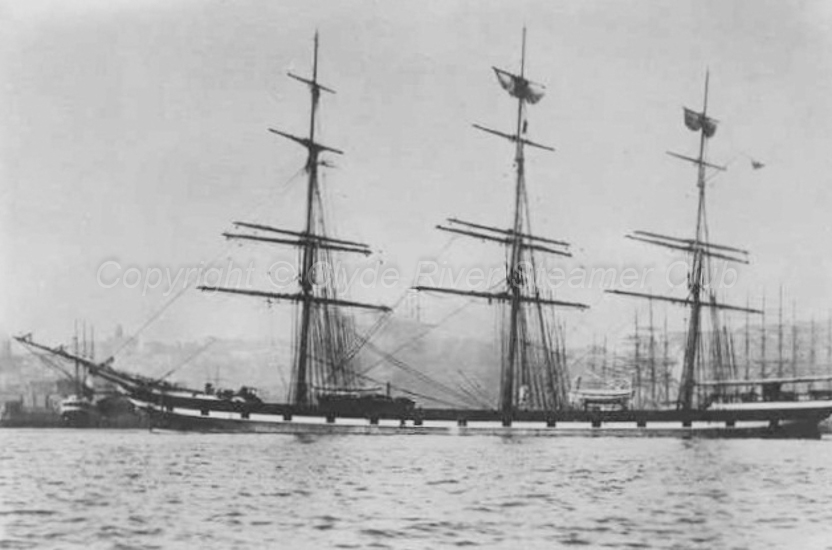


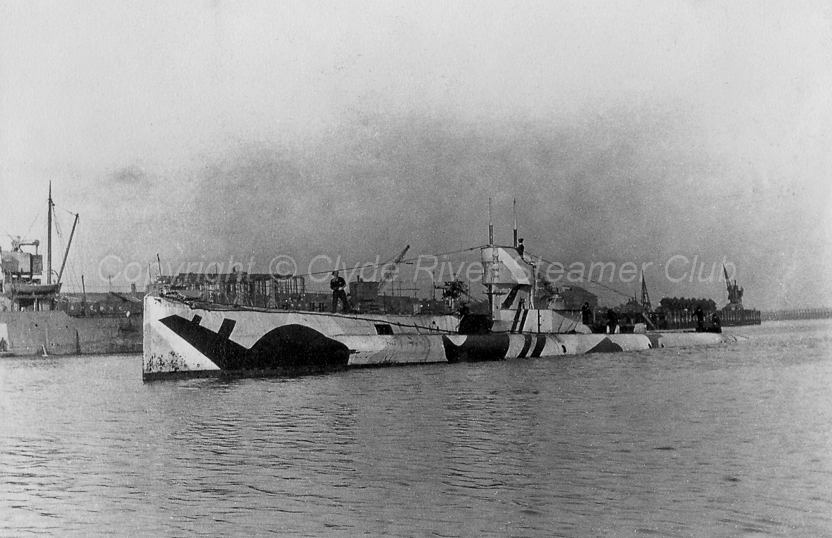
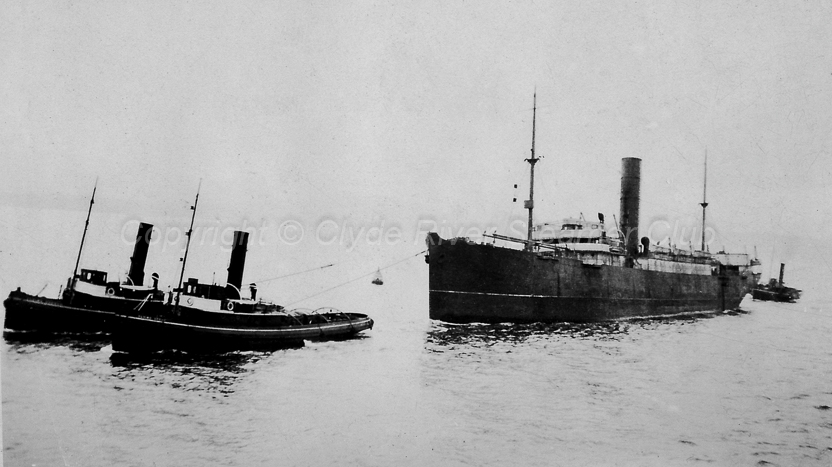

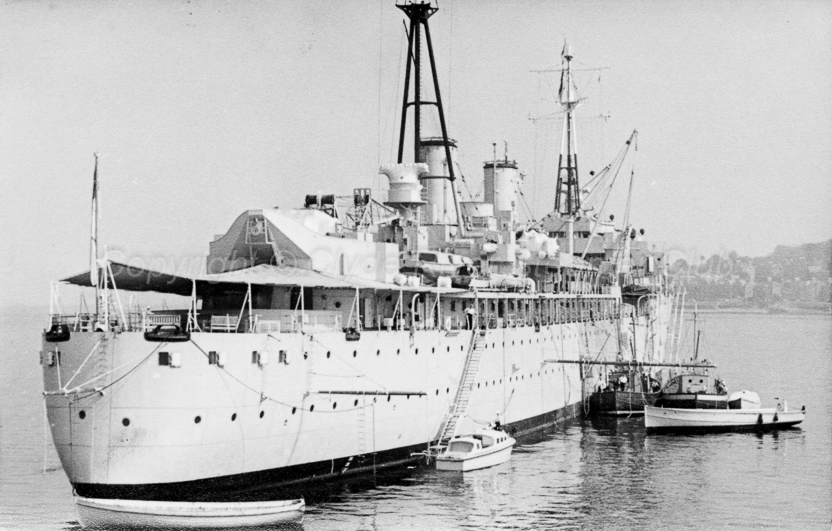
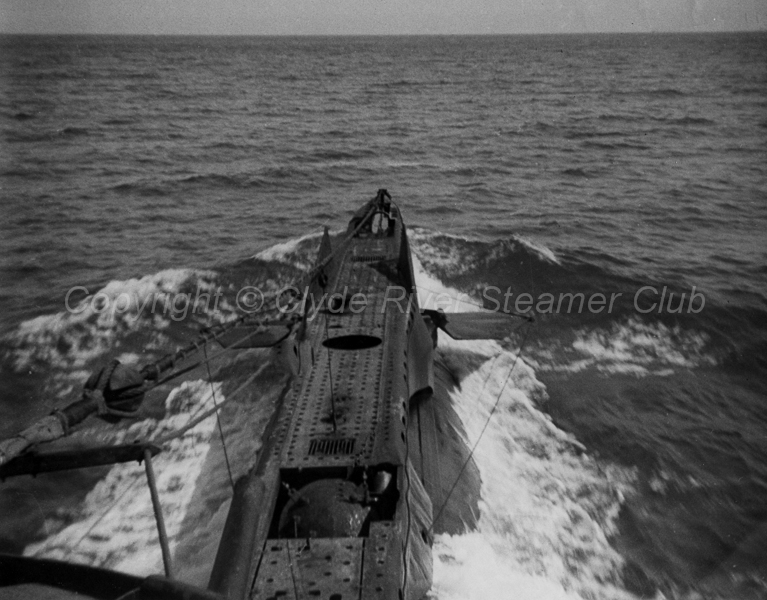
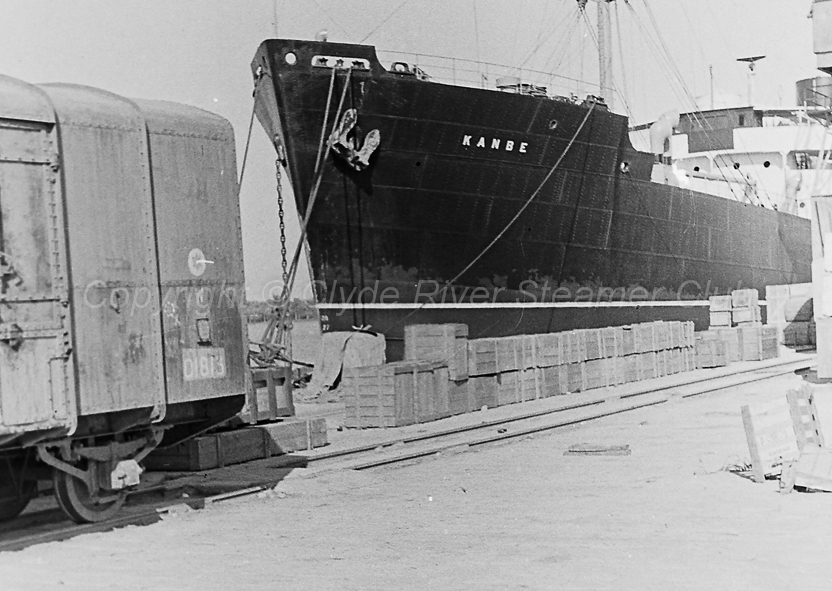


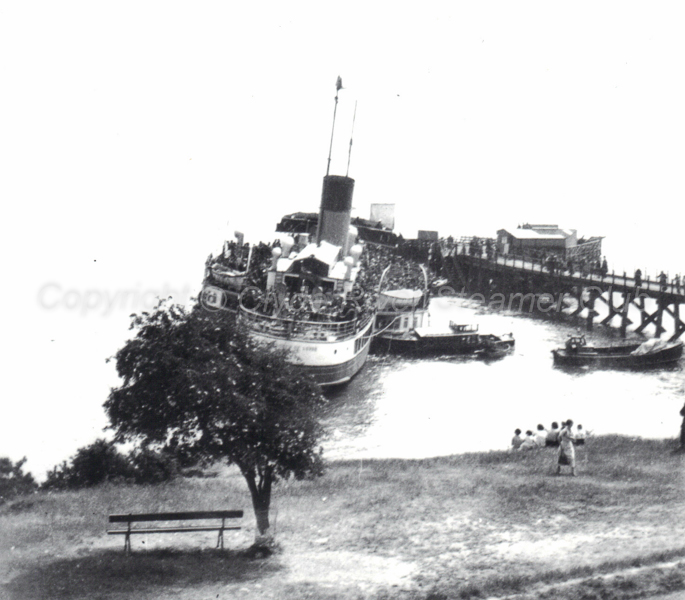

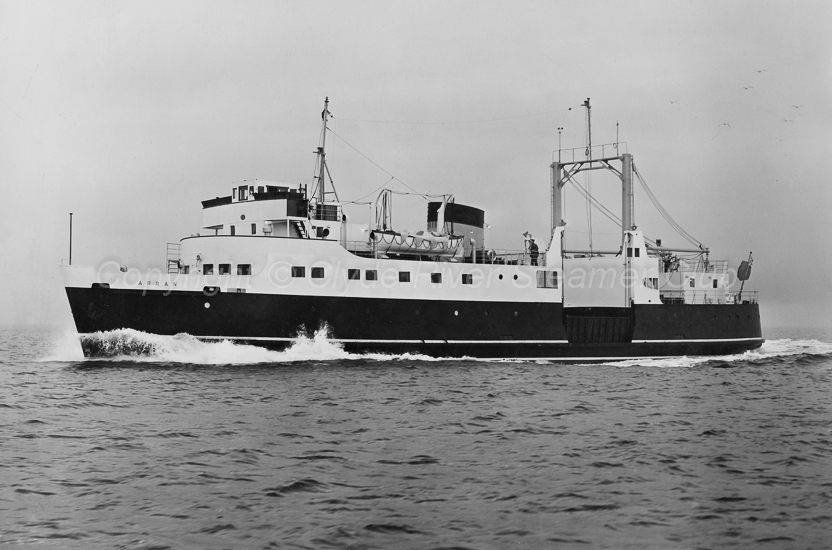
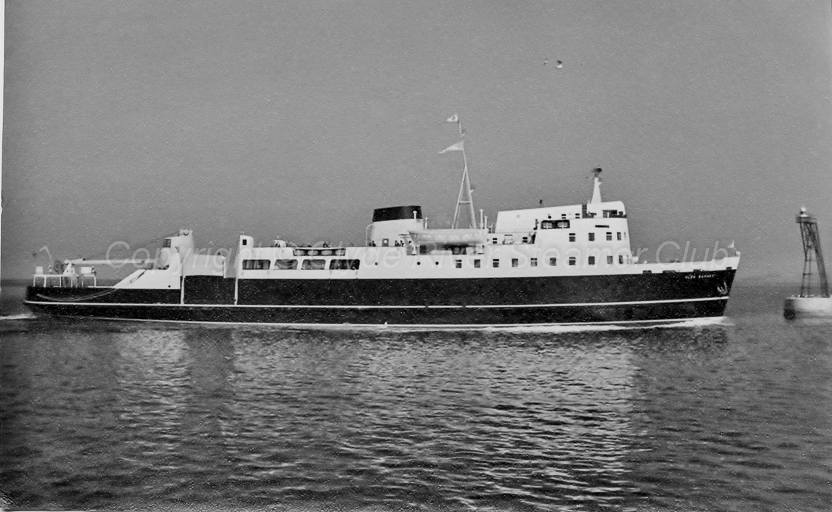
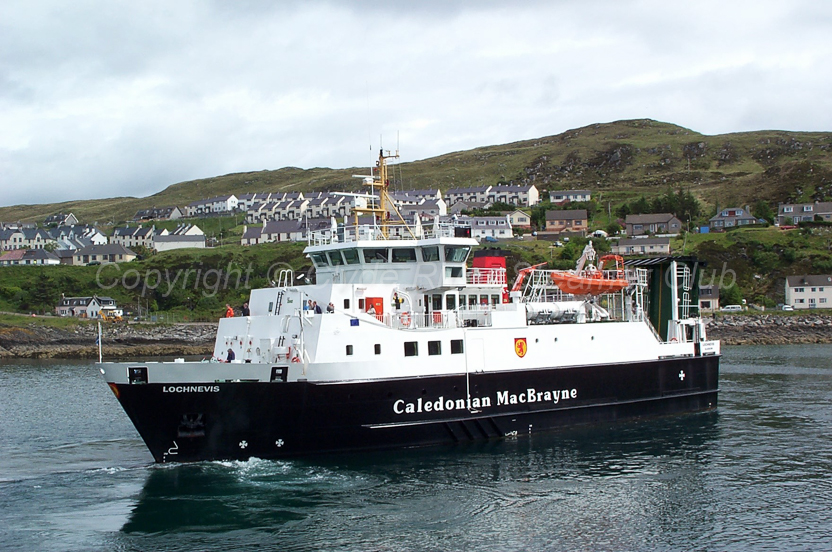

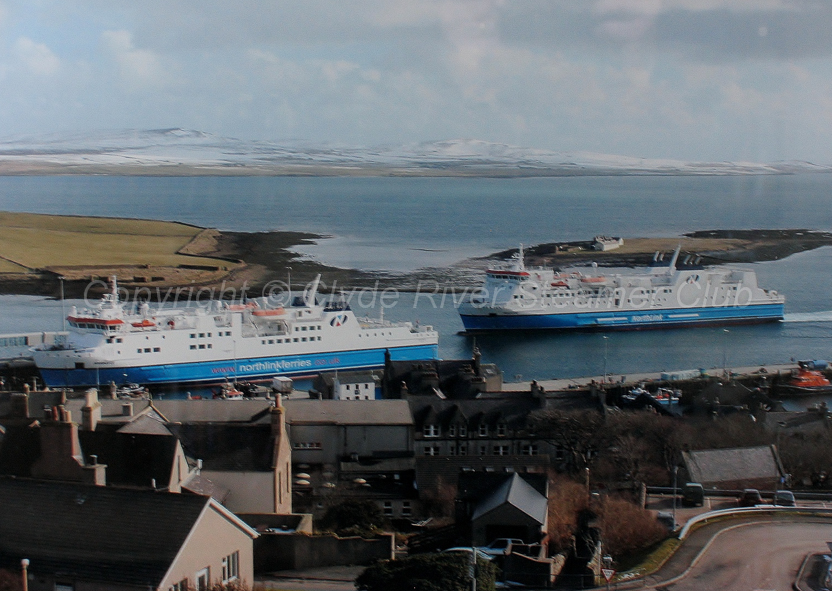

%20with%20Graeme%20Hogg,%20who%20gave%20the%20vote%20of%20thanks%20(1).jpg)
